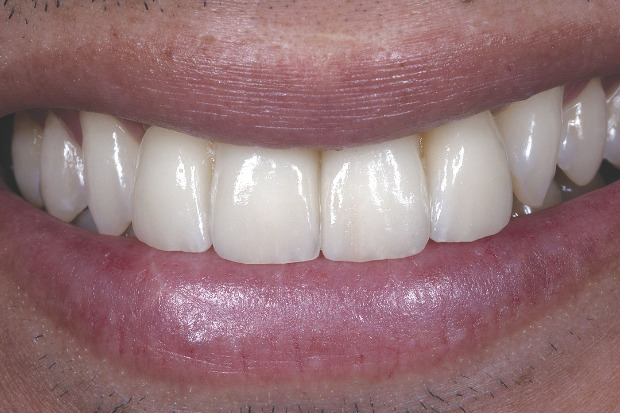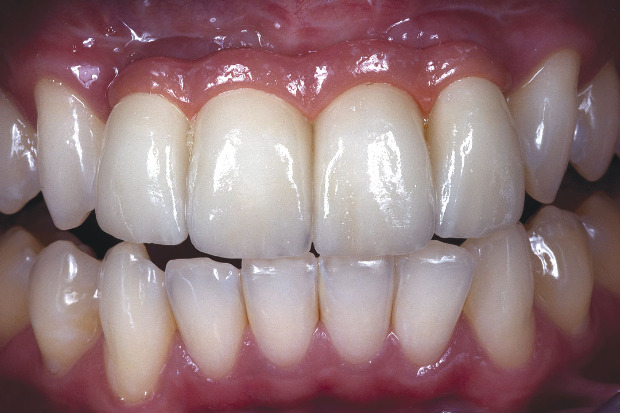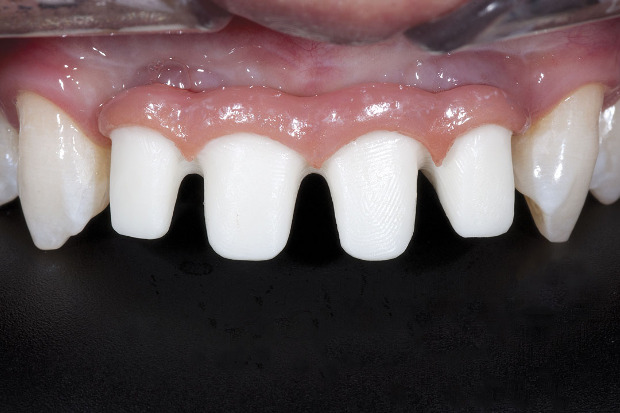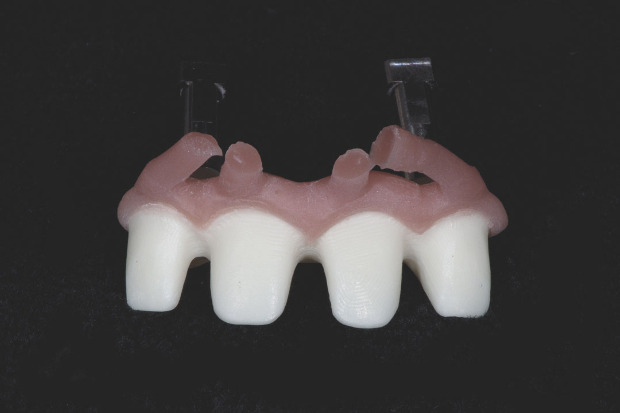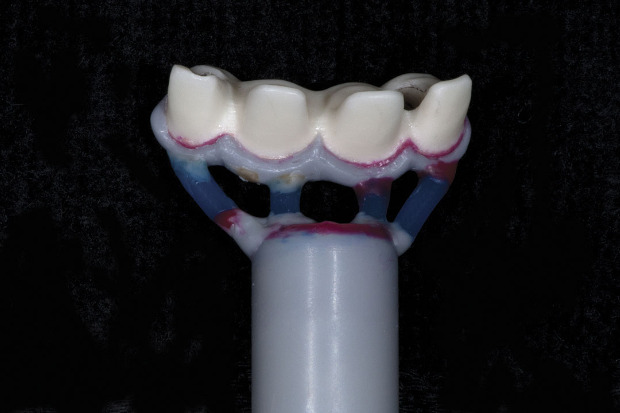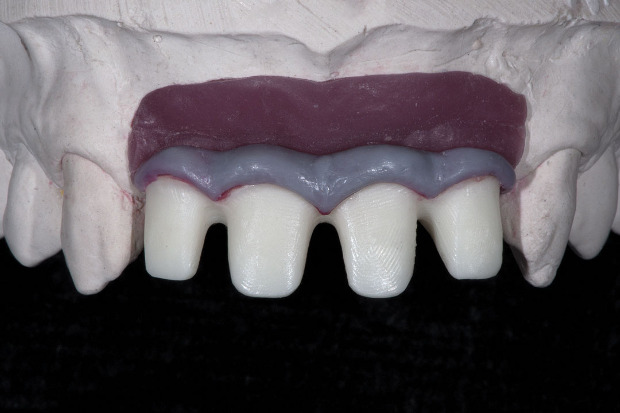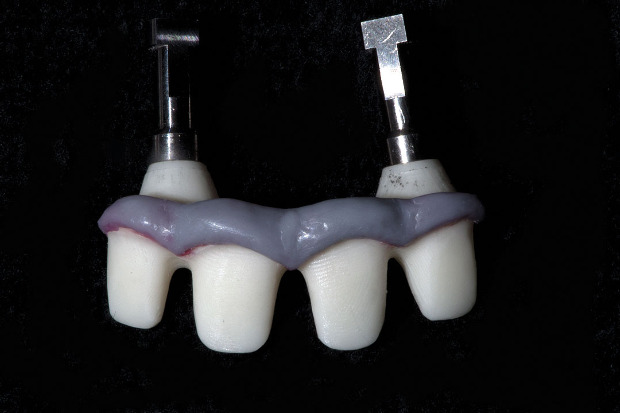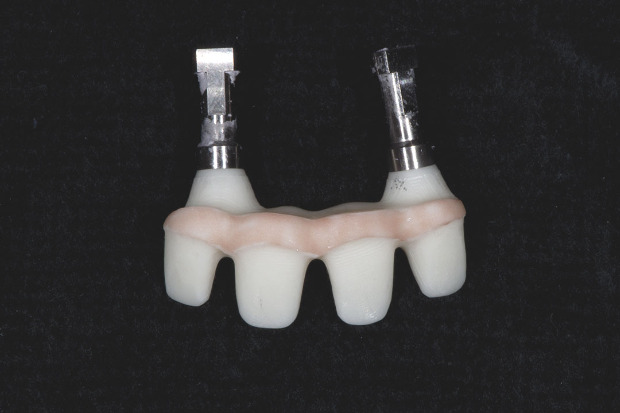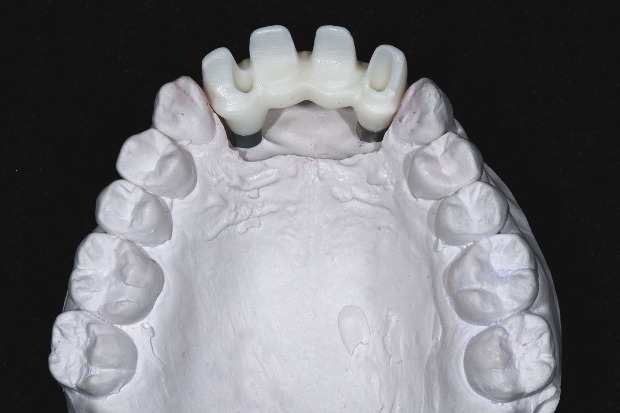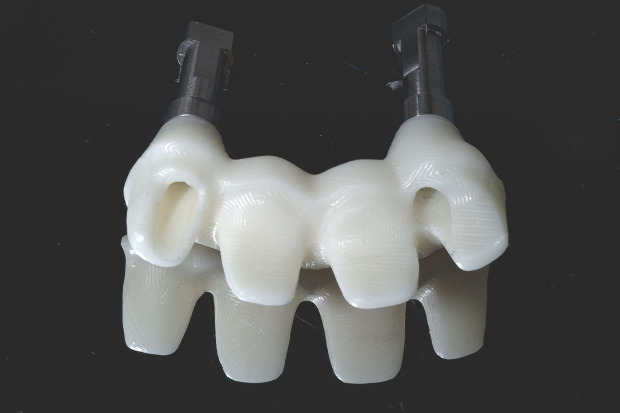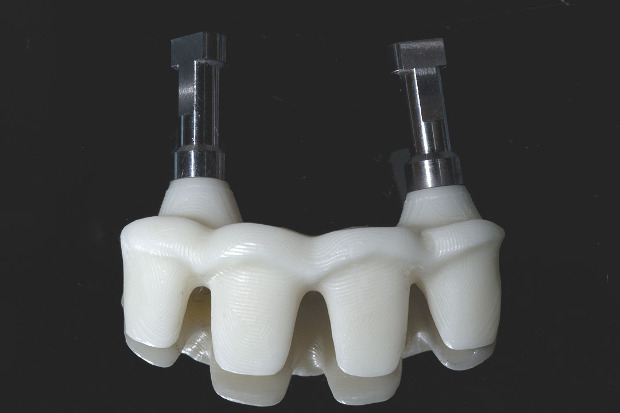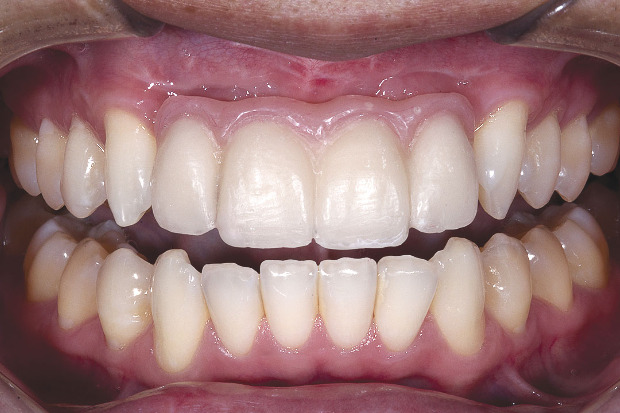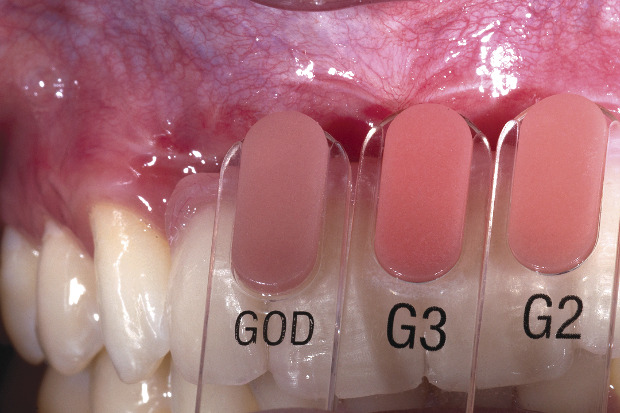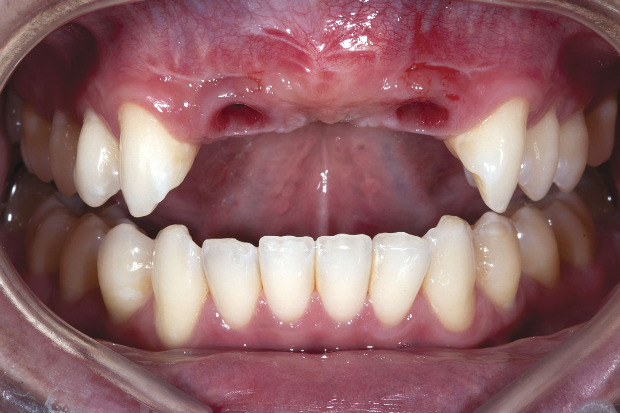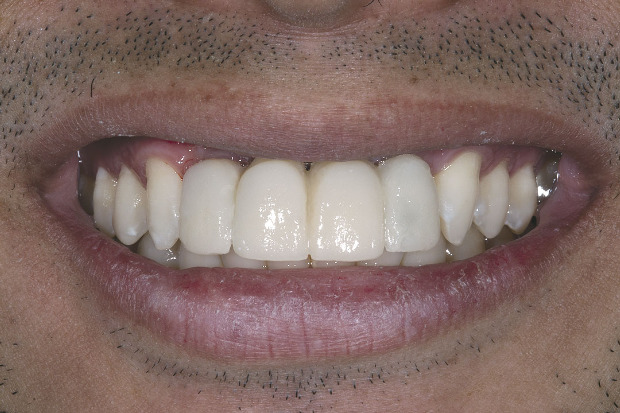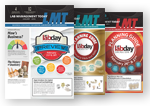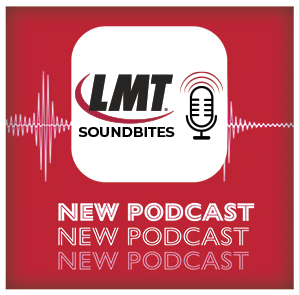Figure 18
Close-up facial view of the final restorations.
--------------------------------------------------------------------------------------------
Seunghoon (Steve) Lee, CDT, MDC, works at Zahnwerkstatt in Beverly Hills, CA, owned by Joachim Kern, MDT. Previously, he owned a laboratory in Gaithersburg, MD until he moved to California to attend the UCLA Master Dental Ceramist Program from which he graduated in 2008, was named the Master Dental Ceramist of the Year and where he studied with Dr. Ed McLaren. Lee also lectures on IPS e.max all over the world in English and Korean. He has earned the following technical certifications: CEREC AC Scanner, Designer and Technician; CEREC inLab System Technician; E4D Designer and Technician; COS Scanner Designer; Lava 3M Designer; CAPTEK; Nobel Procera Optical Scanner Designer; and IPS e.max and Empress Instructor and Trainer.Figure 4
The patient wore this new esthetic functional prototype (designed by Dr. Edward McLaren) for about two months so he could evaluate his function, speech and different movements and see the anticipated gingival effects, natural architecture and contours that were lacking in the previous restorations. This process achieves the best restorative outcome for the patient.
